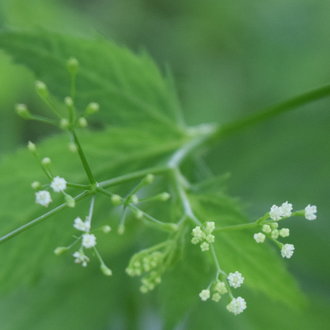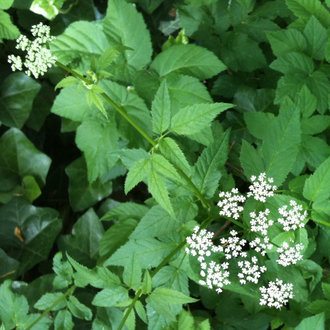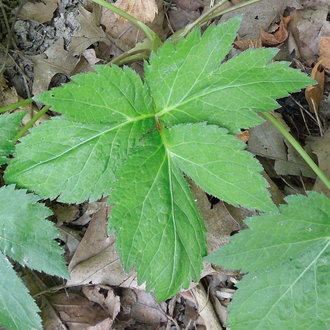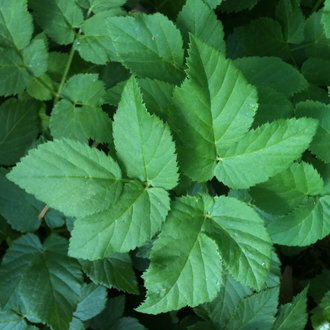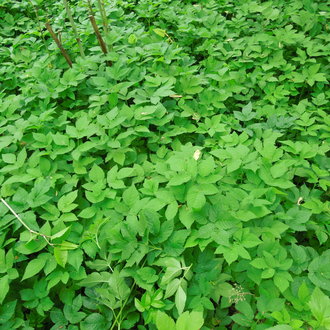Honewort vs Bishop's Goutweed
This guide is under construction and has not been published yet. It may have errors. When in doubt, double-check other sources for definitive ID.Honewort, native to North America, is sometimes confused with the introduced (and often invasive) Bishop's weed or goutweed, as they have similar appearances and the leaves have a similar aroma, and they often occur together in the same habitat. They are easily distinguished by flowers or growth habit, and with more effort, by leaves.
Honewort (Cryptotaenia canadensis) | Bishop's Goutweed (Aegopodium podagraria) |
An herbaceous perennial plant native to eastern North America, common in riparian areas and moist woodlands. | An herbaceous perennial, native to Europe, which spreads aggressively, forming large colonies, by underground rhizomes. Escaped from cultivation at various locations across North America, mostly in the northeast, where it is considered invasive. |
Smaller, less conspicuous flower clusters where flowers are sparser and more irregularly-spaced, on stems of unequal length. Photo © , CC BY-SA 4.0. | Larger, showier flower clusters with regular, orderly spacing of flowers on stems of equal length. Photo © botanygirl, CC BY 4.0. |
Leaves divided only into three leaflets; although leaflets may be deeply cut, leaves are only singly-compound. Photo © , CC BY-SA 4.0. | Leaves are doubly-compound, usually with three sets of three leaflets, making for nine leaflets in total. Some leaflets are occasionally fused. Photo © botanygirl, CC BY 4.0. |
Clump-forming, not forming long rhizomes. Reproduces primarily by seed, and self-seeds prolifically. | Rhizomatous, spreading to form large colonies by vegetative reproduction. Rarely reproduces by seed. Photo © , CC BY-SA 4.0. |
References & External Resources
These short lists show only links helpful for ID. For a complete list of references and resources also covering other aspects of ecology, visit the links section of the full article on each plant, which is the first entry here.



